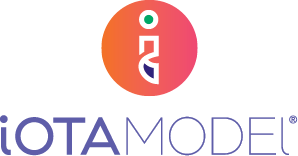The iOTA Model®

Introducing the iOTA Model®
What is the iOTA Model®?
FAQs
Yes. If you already have an account, simply log in and access the model on our website. If you need to create an account follow the link provided on our website.
Model solve time can take up to a minute.
One of the strengths of The iOTA Model® is its serving size approach, ensuring that optimised solutions do not contain unrealistically small quantities of any food item. Serving sizes were determined based on New Zealand food composition data and represent the smallest quantity of each food item that would realistically be consumed at any eating occasion. This is often a smaller quantity than traditional product label serving sizes.
No. If the optimisation settings are too extreme, the model may not generate a solution. In that case this message will pop up: “No feasible solution exists with the constraints you have set. Please try again with altered parameters.”
No. iOTA does not generate an optimised diet unless it meets the nutrient recommendations.
Yes. Unless nutrients have a recommended upper limit of intake suggested by the guidelines (e.g. sodium), the model will not restrict the intakes. Energy is the only exception, for which an upper limit was set to avoid generating unrealistic results.
The model does not explicitly link any foods that are commonly consumed together, for example breakfast cereals and milk, as part of solutions. Thus, it is possible to have optimised diets with high amounts of breakfast cereals (often included due to their fortification with nutrients such as iron and folate), with no increase in milk. This is particularly true when price or emissions are optimised, as in these instances the model takes no account of current dietary practice. When change from current diet is minimised, solutions tend to be more practical.
The iOTA Model® does not include dietary supplements. The model investigates the case of nutrient requirements being met through a nutrient adequate diet.
Food prices vary by location, season, and over time. Currently, the food price data in the model are reflective of NZ supermarket prices from four locations around the country in May 2024. It is our intention to continue to sample supermarket price data over time to eventually reflect seasonal price variation in outputs.
Yes. Although minimising emissions and price is not the primary objective here, users can still set a limit on these values relative to baseline levels.
No. Consumer preferences are only considered under the “minimise change from current diet” setting. Thus, diets generated when minimising emissions or price deviate greatly from the current diet.
The iOTA Model® allows the user to exclude any food groups of their choosing (e.g. nuts and seeds) and run optimisation on that basis. However, such exclusions do not guarantee a restrictive diet. For example, excluding the food group nuts and seeds does not guarantee a nut-free diet as nuts can appear as an ingredient in other food items, such as breads. Similarly, the iOTA Model® does not generate completely vegan diets under the existing capabilities even if a user excludes all animal-sourced food groups. This is because animal-sourced foods may exist as ingredients in composite foods from other food groups (e.g. dairy ingredients appear in some of the food items in the discretionary foods group).
Nutrient-adequate diets with the lowest greenhouse gas emissions or price are the least acceptable—insights from dietary optimisation modelling using the iOTA model®
Front. Nutr., 01 August 2025
Sec. Nutrition and Sustainable Diets
Volume 12 – 2025





